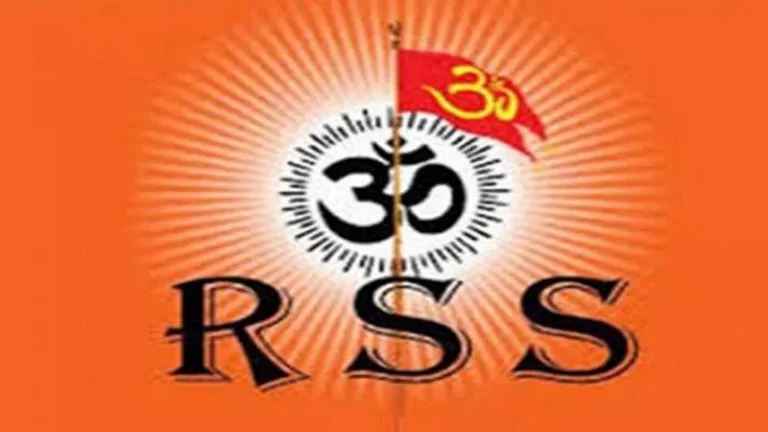
Once the Partition of the Indian subcontinent had become a reality, a team of RSS activists in Sindh had two urgent aims in mind: to facilitate a smooth evacuation of the Sindhi Hindus who had begun to repose considerable trust in them, and to blow up a few government structures before leaving.
Rita Kothari
Gandhi did not respond to this question. At the Congress headquarters in Delhi, Sindh seemed too far, its problems small and peculiar. In his correspondence with Sardar Vallabhbhai Patel, the journalist M S M Sharma reports that Congress leaders in Sindh seemed “more Hindu Sabhaites than Congressman,” and hastens to add that “that could not be helped.” Patel responded to this with incomprehension, a common response towards Sindh, “Sindh is a peculiar province. I am not sure I understand it. No principles seem to work there. It is a strange place” [in Das 1972: 137].
Sardar Vallabhbhai Patel had said: “Sindh is a peculiar province. I am not sure I understand it. No principles seem to work there. It is a strange place.”
Nehru echoes a similar sentiment, but with more negativism in a letter to Padmaja Naidu, “I do not feel attracted to Sindh. I have nothing to say about it” [in Anand 1996: 55]. The indifference of the Congress headquarters towards Sindh also found reflection sometimes in Sindh’s own representatives in the Congress. For instance, Narayandas Malkani mentions in his autobiography that when he wrote to J B Kripalani (president, All India Congress Committee) about the Manzilgah riots, his response was as follows:
I have nothing to say about Sindh. It is beyond the scope of my office administration. I have no private perspective on Sindh. Even if I had any, nobody is going to like it. Glad you wrote to Vallabhbhai. You would be coming to Ramgadh, but the working committee feels it is futile to advise Sindhis on anything” [in K R Malkani 1973: 106].
The shades of indifference towards this religious minority in what was emerging as a laboratory of the Muslim League seemed no one’s concern, neither before nor during Partition. Such treatment from the Congress would leave the Sindhi Hindus much scarred, a process well on its way during the 1940s when the RSS was spreading its net. After the fall of Allah Bux Soomro, the last Congress leader who had the potential to bind Hindus and Muslims together, the Congress’ failure in Sindh, now with the Muslim League, was a foregone conclusion.
Allah Bux Soomro, the last Congress leader, had the potential to bind Hindus and Muslims together
In a letter to Nichaldas Vazirani (December 16, 1946), Sardar Patel sadly notes that “I am extremely sorry to see that in Sindh Congress has purchased bitterness and enmity in the bargain” [in Das 1972: 137]. The RSS appeared to salve the Hindu community’s wounds by claiming to do what the Congress was not doing. However, the Congress and the RSS did not always operate in opposition. At a certain level, the two organizations worked in tandem and shared a non-conflicting relationship. The RSS was a cultural organization (albeit not without political implications) and the Congress a political organization (but not without cultural implications). At another level, antagonism against the Congress fed the legitimacy of the RSS. Laxmandas Makhija remembers somewhat wistfully that, “When Nehru visited Sindh, I badly wanted to go. But we were prohibited by our shakha” (personal interview).
Thus, among some of the final memories in the minds of the Sindhi Hindus, the RSS occupies an important place. Once again, this is not true for all Sindhi Hindus but as mentioned earlier, the sustenance and transmission of ideology need not correspond with numbers, at least in the initial stages of the organization. The ex-swayamsewaks of Sindh, active and not-so-active, eventually all arrived in India. Bound by the RSS ideals of self-reliance, physical exercise and brotherhood in saffron – the first generation fondly clung to its RSS connections. “Once a swayamsewak, always a swayamsewak,” smiled Sheth Naomal broadly at me. Naomal lives in Adipur, Kutch (Gujarat) and owns three of the biggest sanitary ware shops there. He hails from the Nawabshah district of Sindh. “I felt very restless when I moved to this place. While I was putting my best into my business and I have passed on to my son’s three sanitary ware shops, I also wanted to see if there were swayamsewaks in Adipur. I was quite sure I would find them. That sense of bonding only the RSS can give. Swayamsewak ko ghar pe baithna nahin aata (An RSS volunteer does not like to rest at home). He would be restless until he has found his own kind” (personal interview). When there were few mechanisms for keeping together a community that is geographically and culturally dislocated, the RSS served as one of the few common links. Bound not only by feelings of self-reliance and solidarity and what they perceived as “essential RSS values”, the ex-swayamsewaks also had a shared view of history. They tend to believe that Sufism was a fringe phenomenon and a mild version of Islam created to entice Hindus to Islam (Relwani, Wadhwani, personal interviews). At a broader level, it leads to a view that only Hindus are the rightful inheritors of India and that the Muslim was here on sufferance. This historical falsification and a rejection of what has been Sindh’s tolerant syncretic tradition has far more serious implications than incidents like the Shikarpur colony bomb case, which helped trigger this investigation. Having said that, our own understanding of the RSS and its brand of narrow dogmatism must also include nuances of relationships, and flashes of warmth. For instance, Gangaram Samrat, a staunch Arya Samaji, an RSS sympathiser and writer of vitriolic books against Islam, continued to share warm correspondence with G M Syed and other Muslim leaders in Sindh. Similarly, K R Malkani, a member of the old-guard from the Sindh cadre of the RSS begins his book on Sindh (1984) by recounting a moving incident:
It was in Sindh towards the end of 1947. Partition had taken place and Hindus were leaving the province in large numbers. One day some of us RSS workers were walking down the Tilak Incline in Hyderabad. Suddenly an elderly Muslim woman coming from the opposite direction stopped in front of us and asked in pain: “Brothers, will you also go away?” He recounts some more incidents of this nature and remarks, “I am not sure there were many areas in the India of 1947, where incidents like these could occur” [K R Malkani 1984: Preface, p 1].
Sindhi Hindus (including staunch ex-RSS activists) have positive memories of the Sindhi Muslims
Such fond memories of the past and more crucially, letters and emails between some Hindu Sindhis and some Muslim Sindhis co-exist with a strong legacy of the RSS. Although at an experiential and emotive level, the Sindhi Hindus (including staunch ex-RSS activists) have positive memories of the Sindhi Muslims, in their historical vision, the Muslim of Sindh collapses with the Muslim of the Muslim League, who in turn collapses with the Muslim anywhere. In this vision, the Muslim in pre-independence Sindh and post-independence India became one – an invader. From Sindh to Somnath, across time and space, he remains the desecrator of Hindu gods and an outsider. This view of history requires the Sindhi of India to establish himself as a pure Aryan in a pre-Islamic conception of history. From that Aryanness – the Hindutva of today – the Sindhi enacts an imagined history in which he has always been the victim, and the Muslim the victimizer. It is no coincidence that the symbolic but violent correction to this historical imbalance came from one of the old RSS loyalists from Sindh, L K Advani. (Concludes)
___________________
 Rita Kothari is Professor of English at Ashoka University, Delhi. She is one of India’s most distinguished translation scholars and has translated major literary works into English. Rita has worked extensively on borders and communities; Partition and identity especially in the western region of India. She is the author of many books and articles on the Sindhi community.
Rita Kothari is Professor of English at Ashoka University, Delhi. She is one of India’s most distinguished translation scholars and has translated major literary works into English. Rita has worked extensively on borders and communities; Partition and identity especially in the western region of India. She is the author of many books and articles on the Sindhi community.
Courtesy: Economic and Political Weekly (Published on July 8, 2006)
Click here for Part-I, Part-II, Part-III